For Justice and Decarceration, Enact Second-Look Sentencing
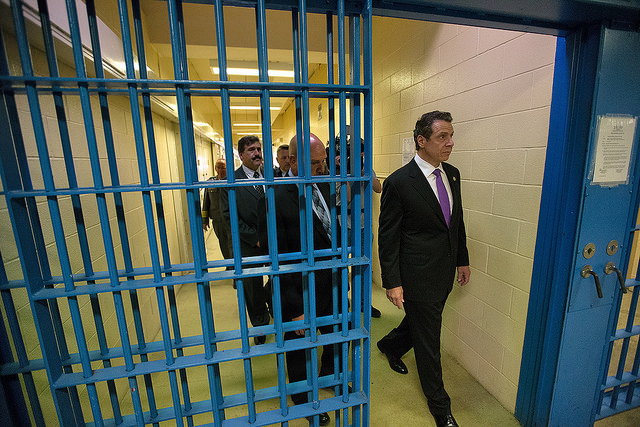
(photo via the Governor's Office)
Regardless what one thinks of presidential pardons, we should reflect upon a simple truth – convictions and sentences meted out at one point might not be appropriate decades later. That is especially true for many people currently serving life or massive prison sentences.
Many have argued for sentence commutations for specific classifications of people. In recent years, the Supreme Court has recognized that judges sentencing young people, even for violent crimes, must consider lack of maturity, impulsivity, and the inherent potential for change, and so reformers are asking courts to resentence those serving long prison terms for crimes committed when they were young. Many people advocate for medical parole or compassionate release for the elderly and infirm. Others focus on people deemed to be low-level, non-violent drug offenders.
At the heart of the problem, however, are all the people serving draconian sentences for crimes committed when they were adults and who are not, at least not yet, suffering from any debilitating illness or in any other “special” category. In fact, it is the “normalcy” of so many cases that highlights the issue we must confront.
Consider Jawad Musa. He is 53. He has been incarcerated for 27 years. A confidential informant and an undercover orchestrated what is known as a reverse sting. Mr. Musa and several others received a phone call saying there was heroin for sale if they could muster $20,000. They cobbled together the money, drove to New York, met the undercover, showed the cash, and were arrested – no drugs were ever exchanged.
Mr. Musa was convicted at trial. The judge who sentenced him expressed frustration with the mandatory sentence he had to impose and wrote that “the length of [Mr. Musa’s] sentence and time served thereon makes him an appropriate applicant for executive clemency.” The trial prosecutor who went on to serve in high level positions in the Justice Department, as well as being named Assistant Attorney General for National Security, wrote that “justice has been done for Mr. Musa’s drug crime in 1991” and “mercy and fairness now dictate that he be given the opportunity to rejoin society and enjoy the balance of his life as a free man.” The Captain at his federal penitentiary wrote that Musa is a “positive force, mentoring younger prisoners” and “I am confident that if granted clemency Jawad would quickly become a productive member of society. He has served a sufficiently long sentence and deserves the chance to re-unite with his family.”
And yet Jawad Musa remains in prison – for life.
Consider Roy Bolus. He is 48. He has been incarcerated 30 years. Unlike Musa, Roy participated in a violent and horrific crime. But unlike Jawad, Roy was only a teenager – he was 18 years old and had never been convicted of any crime. Roy and five other men, including two other teenagers, went to Albany, New York to steal a safe from a rival drug dealer. Once they got inside, one of Roy’s co-defendants shot and killed two people. Roy was in another room at the time of the shooting, did not have a weapon, never fired any shots, but was convicted of felony murder.
Roy’s extraordinary achievements while incarcerated for the past three decades are matched only by the outpouring of support he has garnered for clemency. He has attained Associates, Bachelors, and Masters Degrees and is pursuing a Doctorate. He has taught more than 5,000 hours of classes on HIV prevention, self-improvement, and a variety of academic subjects. He has been the Chair or President of several organizations and helped build an educational program inside the prison. He has numerous letters from family and friends who offer housing, employment, love, and support. Several men write compellingly of the impact Roy had on their determination to persevere while in prison and to thrive if they ever made it to the outside.
And yet it really doesn’t matter. Roy was sentenced to 80 years to life in prison. He is scheduled to see the Parole Board in 2067. He would be 98 years old.
There are countless other similar stories that are part and parcel of the epidemic of mass incarceration – people who have committed crimes, including brutally serious ones, but after decades in prison have grown into remarkably different people.
Last year, the venerable American Law Institute, a non-governmental organization of judges, lawyers and academics, approved the first-ever revisions to the historic Model Penal Code. The MPC, taught in virtually every law school, was developed in 1962 to introduce uniformity and coherence to the myriad criminal codes in the 50 states, and serves as a model across the country. The update to the Code took more than 15 years to complete and yielded a comprehensive 700-page report.
The ALI focused specifically on sentencing in order to address the decades of punitiveness that led to the current state of mass incarceration, made all the more shameful by the significant racial disparities in American jails and prisons.
One recommendation in particular addresses the epidemic of 2.2 million people behind bars. The Code now calls for state legislatures to enact a “second look” provision; to create a mechanism to reexamine a person’s sentence after 15 years no matter the crime of conviction or how long the original sentence. If the original sentence remains unchanged, it would be revisited every ten years thereafter.
While many will sound the alarm for “truth-in-sentencing” or the need for finality, the second-look provision asks a very basic question -- are the purposes of sentencing better served by a sentence modification or by adhering to the original sentence imposed many years earlier?
The commentary to the Code cites a host of utilitarian reasons why long sentences should not be frozen in time, suggesting that “governments should be especially cautious” and act with “a profound sense of humility” when depriving people of their freedom for most of their adult lives.
The commentary notes further that new developments might show that old sentences are no longer empirically valid, as current risk assessment methods claim to be better at predicting risk of recidivism than those previously used. Similarly, new rehabilitative approaches might be discovered for people who at the time of their sentencing were thought resistant to change.
The second-look provision is bold and unprecedented – to actually redress the past 50 years of mass incarceration requires nothing less, as most proposed criminal justice solutions and reforms are prospective and have no impact on those people currently in prison. Further, executive clemency in the form of sentence commutation has also proven to be of limited utility as Presidents and Governors are loath to exercise this power to any serious and meaningful degree.
Second-look allows for mid-course correction if warranted by some measure of changed circumstances -- major changes in the offender, his family situation, the crime victim, or the community -- that merit a different sentence. It is consistent with the growth of restorative justice that seeks to move away from the punishment paradigm of the last several decades. Second-look also allows the sentencing determination to be made in a calmer atmosphere than existed at the time of the original sentencing, so that any notoriety, outside pressure, or inflamed passions may have abated.
Bills have been introduced in the New York State Legislature regarding parole eligibility for people who are least 55 years old and have served at least 15 years of their sentence, and while the devil may be in the details, they are not insurmountable. There will be costs associated with establishing second-look processes but money will ultimately be saved as more people are sent home. Releasing people from prison is often controversial and even one crime committed by a releasee can threaten to shut down any second-look process, so there must be carefully constructed guidelines, created by myriad stakeholders, to ensure the independence of the decision-makers, and that all decisions are consistent, defensible, and transparent.
Mass incarceration is not just about unnecessarily incarcerating masses of people. It is about unnecessarily keeping masses of people in prison for decades. A sentence once imposed is not thereby automatically rendered, just, fair and appropriate in perpetuity. Ultimately, second-look mechanisms are meant to recognize and value the possibility of change and transformation, and to intervene when drastically long sentences are indefensible.
***
Steven Zeidman is a professor of law at CUNY School of Law. He is on Twitter @SteveZeidman. (For related bills in the New York State Legislature see S.8581/A.6354A; S.8346/A.7546.)
***
Have an op-ed idea or submission for Gotham Gazette? Email This email address is being protected from spambots. You need JavaScript enabled to view it.
Revitalizing New York’s Aging Parks
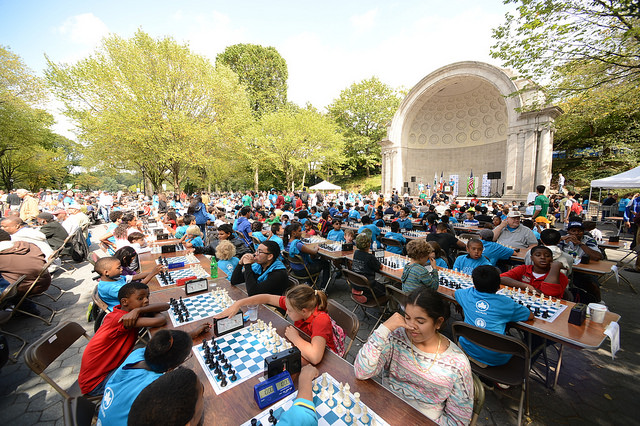
(photo: Parks Department)
New Yorkers are all too familiar with the consequences of aging urban infrastructure. Years of underinvestment in New York City’s century-old subway system has led to a full-blown transit crisis, with rampant delays, consistently overcrowded trains, and frequent equipment breakdowns.
But the subways are just the most glaring problem in an aging city. Another vital piece of public infrastructure is also several decades old, years behind on basic maintenance, and nearing a breaking point: New York City’s parks system.
With more than 100 million parks visitors each year and the city’s population at a record high, New York’s 1,700 public parks have never been busier. These open spaces provide a communal backyard to millions, with major benefits for health and happiness in every corner of the city. But the combination of advanced age, record usage, and decades of underinvestment in maintenance and infrastructure means that serious cracks are showing.
The average city park is 73 years old, and parks in every borough are struggling with aging assets that are at or near the end of their useful lives—including drainage systems, retaining walls, and bridges. About 40 percent of pools and almost half of the 53 recreation centers in city parks were built before 1950. The waterfront facilities overseen by the Parks Department—148 miles of coastline, including beaches, marinas, piers, and docks—are on average 76 years old.
Yet one in five parks has not had a major infrastructure upgrade in 25 years, according to a new report from the Center for an Urban Future. At least 46 parks, triangles, and plazas have not received significant capital investment in nearly a century.
In many cases, the results are plain to see. Serious flooding, damaged pathways, missing stairs, out-of-order bathrooms, and neglected horticulture are common problems in parks across all five boroughs. Other times, the infrastructure issues are hidden from view. For example, numerous drainage systems in city parks still rely on clay pipes from the mid-20th century. Most of the city’s thousands of park retaining walls are cracking and in need of repair or replacement. And one in five park bridges was found to be seriously deteriorated during its most recent inspection.
As maintenance and infrastructure needs soar, the city has struggled to keep pace. The Parks Department’s state-of-good-repair needs jumped 45 percent over the past decade, from $405.9 million in 2007 to $589.1 million last year. Meanwhile, recommended maintenance needs more than doubled, from $14 million to $34 million. But fewer than 15 percent of these needs were funded in the city’s most recent budget—among the lowest levels of any agency.
Although age is the major culprit contributing to mounting infrastructure needs, decades of underinvestment in basic maintenance has taken a toll. The Parks Department has too few full-time staff—including plumbers, masons, and gardeners—to keep parks assets in good shape and mitigate problems before they grow. New York’s system has about 150 gardeners citywide for roughly 20,000 acres of parkland—a ratio of 1 gardener to every 133 acres. By comparison, San Francisco employs over 200 gardeners for 4,113 acres of parkland—a ratio of 1 to 20.
Mayor Bill de Blasio and the City Council deserve credit for taking important steps to address parks infrastructure needs. In recent years, the Community Parks Initiative and Anchor Parks Initiative have dedicated more than $300 million to improve chronically underfunded parks, with significant benefits in every borough. But there’s still much more work to do to shore up the city’s aging parks system and lay the foundation for the next century of public open space.
It starts with committing to strategic increases in the Parks Department’s expense budget, with the goal of permanently funding much-needed skilled maintenance staff such as gardeners and foresters, masons, plumbers, electricians, mechanics, and other skilled workers, while closing the maintenance gap. In addition, the mayor and the City Council should establish a dedicated pool of capital funds for the parks system’s unsexy infrastructure—such as drainage systems and retaining walls—which are often passed over in discretionary funding.
To pay for all this, New York City should explore new revenue streams dedicated to parks maintenance and unglamorous capital projects. For example, a small surcharge on tickets to sporting events and greens fees at city golf courses could fund routine maintenance at parks, playgrounds, and recreation centers. Likewise, a surcharge on dockage fees at city-owned marinas could be used to maintain waterfront facilities. There are also numerous parks where the city could add a reasonable number of concessions that enhance the experience of parkgoers while providing vital new sources of revenue.
Given the scale of the parks system’s needs, the city’s capital dollars need to stretch as far as possible. But today, that’s hardly the case. A single bathroom can cost upward of $3 million and ten-year renovations are not uncommon. The mayor should make reforming the broken capital construction process a top priority, and the Parks Department should work to significantly speed up each phase of the process under its control.
New York’s public parks have benefited countless New Yorkers for well over a century. By investing wisely in their revitalization, these essential open spaces can continue to thrive into the next century and beyond.
***
Eli Dvorkin is managing editor of the Center for an Urban Future, a New York–based think tank focused on expanding economic opportunity. On Twitter @nycfuture & @wetwax.
***
Have an op-ed idea or submission for Gotham Gazette? Email This email address is being protected from spambots. You need JavaScript enabled to view it.
Without the Federal Government But With New York, Puerto Rico Endures
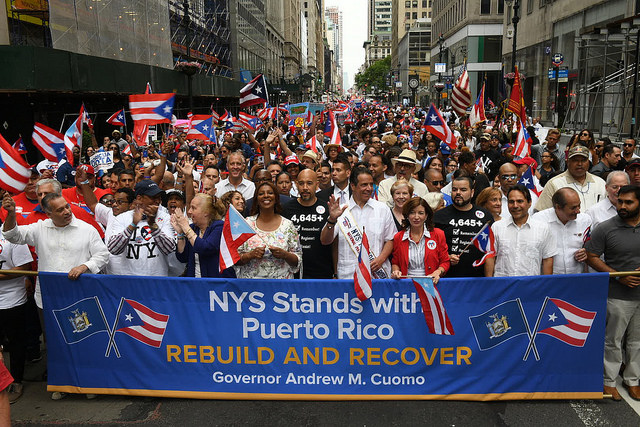
(photo via the Governor's office)
Loíza is a town on the northeastern coast of Puerto Rico, home to almost 30,000 American citizens. For 72 hours last September, as Hurricane Maria ravaged the island and other territories in the Caribbean, Loíza and all of its residents became isolated from the outside world when the three main roads that connect this medium-sized town to the rest of the island became impassable.
The challenges that residents of Loíza faced and continue to deal with are not only emblematic of the lack of resources invested in rebuilding efforts and the crumbling economy hindering the island's recovery, but also of the resilience and resourcefulness of the Puerto Rican people.
Last March, I returned to my native Puerto Rico to see the impact of the disaster firsthand. I visited six different towns across the island, including Loíza, and with a great deal of frustration and heartbreak, I confirmed what I had feared: the inadequate and anemic responses from the federal government and the island’s central administration have left almost 3 million Puerto Ricans on the island and their local governments to fend for themselves.
Thousands, especially those in low-income communities, continue to suffer from unreliable electricity and water systems, food and resource shortages, and serious mental and physical health emergencies. Considering this, it should come as no surprise that the real number of storm-related fatalities is closer to 4,600 souls, according to a recent Harvard University report, as opposed to the 64 official deaths counted by the U.S. government.
While the trip was disheartening in many ways, it was also inspiring and hopeful. I met several mayors, nonprofit organizations, scholars, labor leaders, and dedicated individuals whose steadfast leadership in helping Puerto Rico recover has been nothing short of heroic. Together, they have slowly built an important grassroots recovery movement that has made significant progress despite minimal resources.
For instance, Taller Salud, a Loíza-based nonprofit organization seeking to ensure the physical and emotional well-being of low-income women and girls, saw its mission transform out of necessity, becoming a critical emergency response provider giving out life-saving assistance to thousands.
To put it plainly, Puerto Ricans do not need or want charity. What they need is our support to further invest in those leaders and communities working tirelessly to implement innovative visions and projects locally. They want to maintain full agency over how their hometowns and infrastructure are rebuilt. We do not need to tell them or show them how to survive or thrive -- what we need to do is augment their ability to do what they have already been doing.
Many states and cities across the mainland United States have stepped up to provide support in the face of the failed response by our federal government. I am proud to say that New York has done this and in spades.
Our State and City governments, along with elected officials across all levels of government, local nonprofit organizations, civic leaders, and many New Yorkers launched an extremely dynamic relief effort, which continues to this day. From millions of dollars in monetary donations, to collecting tons of essential items, to sending highly qualified emergency responders, medical staff, and expert personnel to help rebuild the island’s decayed infrastructure, New York has led by example as to how to coordinate a comprehensive relief response and empower the Puerto Rican people to take the lead in its recovery efforts.
During a recent meeting of Governor Cuomo’s New York Stands with Puerto Rico Rebuilding and Reconstructing Committee, I joined my fellow committee members and Governor Cuomo’s administration to identify a list of priorities and recommendations to help facilitate Puerto Rico’s rebuilding efforts.
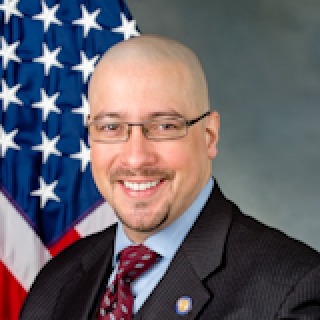 My list of recommendations focuses on counseling and mental health services, access to higher education, employment assistance, accessibility of clean water, and promotion of green energy infrastructure.
My list of recommendations focuses on counseling and mental health services, access to higher education, employment assistance, accessibility of clean water, and promotion of green energy infrastructure.
As a result of the recent committee meeting, I penned a letter with members of the Senate Democratic Conference urging SUNY and CUNY to extend their in-state tuition credit program. This program aims to ensure that Puerto Rican and U.S. Virgin Islands students who relocated to New York are able to continue their higher education for the next academic year. Last week, SUNY extended the program and CUNY is expected to do the same imminently.
Puerto Ricans have not only seen their lives completely torn apart by a natural disaster, but also by the criminal inaction of our federal government. While the road to recovery will be long and filled with challenges, the spirit of my fellow Boricuas remains intact. At a time of such darkness, the clarity of their ideas and their commitment to rebuilding is worthy of support. The goal of the diaspora, and all who seek to help, must be to empower our Puerto Rican brothers and sisters to transform and improve their neighborhoods and towns as they see fit. The storm and this administration have dealt a painful blow to Puerto Rico, but the island and Puerto Ricans endure.
***
Gustavo Rivera is a state senator representing part of the Bronx and a native of Puerto Rico. On Twitter @NYSenatorRivera.
***
Have an op-ed idea or submission for Gotham Gazette? Email This email address is being protected from spambots. You need JavaScript enabled to view it.
Missing Pieces of the Discussion Around Specialized High Schools and City Education
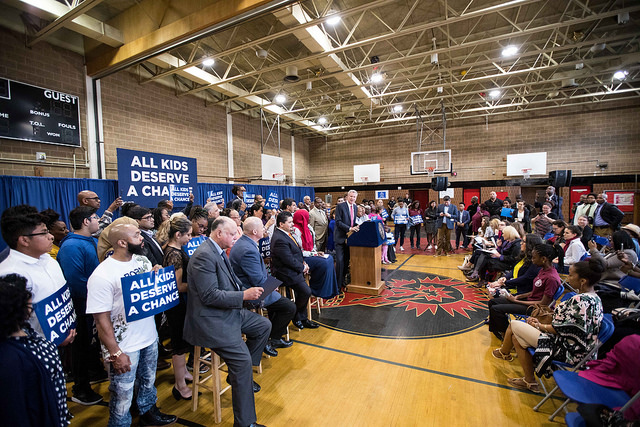
Mayor de Blasio's announcement (photo: Benjamin Kanter/Mayor's Office)
On June 2, Mayor Bill de Blasio announced in Chalkbeat that he was urging the State Legislature to change the admissions system at the city’s eight specialized high schools, which relies on a single high-stakes exam called the SHSAT. Only 10 percent of students admitted to these selective high schools are black and Hispanic, while these students make up 67 percent of the overall public school population. This year, only 10 black students were offered admission to the city’s most selective of these high schools, Stuyvesant, out of 902 students admitted.
The Mayor and the Chancellor have proposed that admissions instead depend on a combination of a student’s school ranking in terms of grades and state test scores. In the meantime, before the state law is changed, de Blasio plans to expand the “discovery program,” a special program for disadvantaged students near the cut-off score on the SHSAT, to admit them into these schools after extra academic preparation.
As City Council Education Chair Mark Treyger later pointed out on Twitter, the entire effort was announced with little preparation; and ”key stakeholders were also not consulted” on something “dropped 11 days before the end of the [Legislative] session.” The proposal has aroused much controversy, and will not come to a final vote this year, as neither the Assembly nor the Senate was prepared to pass it so late in the session that just ended. Yet the issue will be surely be reconsidered again when the Legislature reconvenes next year, and the debate continues, including over what the City can and should do on its own.
Despite the fact that much ink has been spilled and emotions aroused since de Blasio made his announcement, several aspects of this hot-button issue remain under-discussed:
1. This move is long overdue. New York City is the only school district in the entire nation where admissions to any high school depends solely on the results of a single high stakes test. This was confirmed by Chester Finn of the Hoover Institute, a conservative education advocate who co-authored a book,“Exam Schools: Inside America’s Most Selective Public High Schools.” Advocates have made efforts for at least 50 years to open up the admission process to these schools and make it more fair. The Hecht-Calandra Act of 1971 in New York, which specified that specialized high schools must rely solely on a single exam for entry, was passed in the first place in response to such a campaign. Bill de Blasio also promised to reform this admissions process when he first ran for Mayor in 2013.
2. The reality is that relying solely on a single high-stakes test for admissions, grade retention, or any important decision in a student’s educational career is unfair, unreliable, and likely to have a racially disparate impact, as pointed out by the National Academy of Sciences nearly 20 years ago in its seminal report, High Stakes, Testing for Tracking, Promotion, and Graduation.
3. The SHSAT, produced by Pearson, is a highly peculiar exam that has never been independently assessed for racial bias. This was pointed out by Joshua Feinman in 2008, and confirmed more recently by the NAACP Legal Defense Fund in its 2012 Civil Rights complaint about the use of this exam. The results of this test also appear to be gender biased, as girls tend to score significantly higher on state exams and receive better grades, but score lower than boys on the SHSAT. (Girls were only admitted to Stuyvesant and Brooklyn Tech in 1969-1970.) The test is quirky in other ways and is scored to give extra points to students who do exceptionally well on the ELA or the math section – rather than those students who score well on both subjects. It also has poorly worded questions – see, for example, the first question in this sample exam.
4. The mayor could alter the admissions tests at five of the eight specialized high schools immediately – without any act of the state Legislature. Only Stuyvesant, Bronx Science, and Brooklyn Tech are named in state law. The other five schools -- Staten Island Tech, the High School of American Studies, the High School for Math, Science, and Engineering at City College, Queens High School for the Sciences, and Brooklyn Latin School -- were designated as specialized high schools by Joel Klein when he was city schools chancellor, and could be undesignated as such by Chancellor Richard Carranza. All it would take is a vote of the Panel on Educational Policy at one of its monthly meetings. It is a panel made up of a supermajority of mayoral appointees. (The best explanation of how only three schools are mandated to use this exam was published in Gotham Gazette. While many other news outlets have gotten this fact wrong in the past, they have recently improved their reporting on this issue.)
5. Despite the huge amount of time and money many students invest in test prep for the SHSAT exam, there is research to show that attending a specialized high school has little or no impact on a students’ future SAT scores, chances of enrollment in selective colleges, or college graduation rates – which in turn casts real doubt about the value of attending one of these schools.
6. Whatever happens to the admissions system at the specialized high schools, there are myriad problems with how admissions to New York City schools have been designed. Many schools utilize a complex and competitive application system overly reliant on test scores. This makes the process of admissions stressful to kids and their parents, and leads to excessive test prep. In many cases, admissions to middle schools are based heavily upon students’ scores on the 4th grade state exams, and 7th grade exams for high school. The state tests and their scoring methods have their own problems in terms of accuracy and validity. In addition, some New York City middle and high schools have developed their own special tests that they rely upon for admissions.
7. The competitive nature of this process worsened under Mayor Michael Bloomberg and Chancellor Klein. The number of high schools that admitted students through academic screening increased from 29 in 1997 to 112 in 2017, while the proportion of “ed-opt” high schools, designed to accept students at all different levels of achievement, dropped sharply. Even so-called unscreened programs actually do screen students, in covert ways. Moreover, the Gates-funded small schools that proliferated after 2002 initially barred students with disabilities or English language learners from their schools, prompting a civil rights complaint in 2006.
Most of these small schools also required prospective students and their families to attend special “open houses” in the evening, which also tends to box out families with the fewest resources. While Bloomberg and Klein often bragged about expanding school “choice,” too often this has meant that schools make the choice, not students or families. There is something to be said for comprehensive high schools as exist in most of the country, where students automatically have a right to attend when they enter 9th grade and don’t have to compete to get into.
8. The method de Blasio now proposes to use for admissions at the specialized high schools would be to give preference to students at the top of their class in terms of grades wherever they attend middle school, as long as their state test scores are also good enough. Yet this method, based upon the admissions process at the University of Texas system, will likely only work to effectively integrate the specialized high schools if city middle schools remain largely segregated.
9. Even if all New York City high schools became less stratified according to race and class, one would still be left with the biggest problem of all: too many elementary and middle schools are simply not providing the quality of education necessary – especially for students of color. This was revealed by city students’ recent results on the NAEP exams, which showed scores have stagnated – with the only significant change since 2013 being a seven-point decrease in the proportion of fourth-graders proficient in math. The achievement gap among racial and ethnic groups is also larger than ever, in 4th and 8th grade reading.
10. Class size reduction is one of very few reforms proven to work to narrow the achievement gap, and yet New York City class sizes remain excessive. In fact, class sizes have increased substantially since 2007, and are up to 50 percent larger than class sizes in the rest of the state. More than 290,000 New York City students were crammed into classes of 30 or more this fall. In the early grades, the number of first-through-third-graders in classes of 30 or more has ballooned by an amazing 3800 percent. Yet despite promises to reduce class size when he first ran for office, de Blasio has done nothing to accomplish this.
In January, Class Size Matters, along with nine New York City parents and the Alliance for Quality Education, brought a lawsuit versus the City and the State to require the Department of Education to lower class sizes in our public schools, as the state’s highest court deemed was necessary for students to obtain their constitutional right to a sound basic education. Our lawsuit will be heard in State Supreme Court in July. Whether the city’s public school students will receive an equitable chance to learn may depend on the outcome of this lawsuit, as well as the education policies pursued by Mayor de Blasio and Chancellor Carranza going forward.
***
Leonie Haimson is the Executive Director of Class Size Matters. On twitter @leoniehaimson.
***
Have an op-ed idea or submission for Gotham Gazette? Email This email address is being protected from spambots. You need JavaScript enabled to view it.
Note: this column has been corrected to accurately reflect when the schools admitted girls.
NYCHA Decree an Opportunity to Awaken Potent Political Force
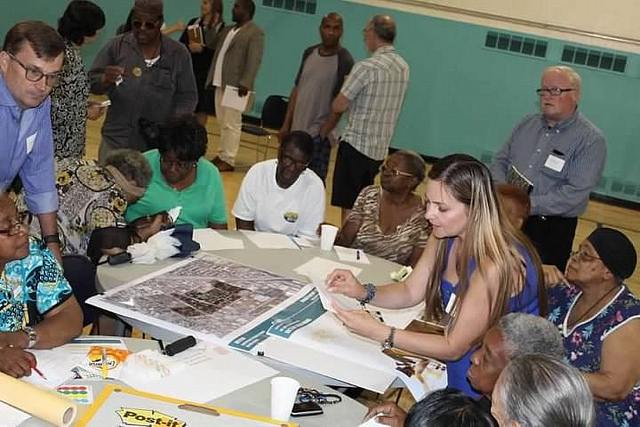
(photo via NYCHA)
In 2014, in an interview about living conditions in public housing since Superstorm Sandy devastated the Rockaways, a tenant leader lamented, “...we were on the steps of City Hall today. I’m tired. I’m sick and tired having to come in the same spot to fight the same fight. It’s crazy that as public housing residents, we have to go through what we have to go through just for a decent place to live.” Another tenant leader later mused, “Where are the people that used to be here who had our best interests at heart?”
Fast-forward to 2018, and the Citywide Council of Presidents, an elected body representing over 400,000 tenants of the New York City Housing Authority (NYCHA), took the unprecedented step of suing the agency. Residents pointed to high-profile health and safety failures including a lapse in lead paint inspections with fraudulent reports to the contrary from former Chair Shola Olatoye and sporadic heat and hot water during a frigid winter.
Their claims have been robustly confirmed by a multi-year federal investigation into NYCHA’s operations, with the city and federal government entering a consent decree last week that commits $2.2 billion over 10 years, overseen by a court-appointed monitor. Tenant plaintiffs also allege that NYCHA has failed to include residents in policymaking, as U.S. Housing and Urban Development (HUD) guidelines mandate.
It is this sense of powerlessness and lack of political incorporation of tenants in NYCHA’s oft-described “city within a city” that I investigate in Rockaway, where almost 10,000 public housing residents live. New York City built extensive public housing along its waterfront throughout the twentieth century. Rockaway’s marginal location created an affordable landscape for building public housing, with beach bungalows torn down as slum clearance to make way for the developments between 1951 and 1973.
Today, 23 percent of Queens’ public housing is in Rockaway, versus only five percent of the population of this “borough of homeowners.” Rockaway has some of the highest percentages of income-restricted properties in New York City, incorporating almost one in three rental units.
Homeowners in Rockaway look askance at the concentration of public housing there, accusing the city of “dumping” unwanted poverty at their doorstep since at least the 1950s. Local homeowners told me, “All the housing projects...Rockaway has its burden and we have its share and it also kind of diminishes our ability to be politically active. It’s putting more people on us, diluting our ability to be strong,” and “If it’s bad, it’s NYCHA. If it’s the fix, it’s NYCHA. And if it’s the repair, it’s NYCHA.”
Faced with this antipathy, living with mold, mildew, leaks, and heat and hot water outages in crumbling, aging properties, tenants over the years developed pronounced political apathy, manifest in very low turnout in tenant council elections, absence at community recovery meetings, and lack of participation in advocates’ surveys of post-Sandy living conditions. “We could have gotten more than 600 people surveyed if people had faith or had hope or believed that something’s going to come of it,” one tenant council officer said.
My research shows that the disaster recovery experiences of NYCHA residents have been materially different than those of their neighbors who own homes or rent in the private-housing market. These disparities are the direct result of several detrimental factors and policies, including (1) the racialized, gendered, and classist stigma of living in public housing; (2) HUD regulations that stipulate tenants’ political power and channel it narrowly towards working with local public housing authorities; (3) an opaque status that allows NYCHA to operate without clear, accountable managerial and budgetary oversight at the state and local levels; and (4) the spatial isolation of NYCHA developments, which cuts public housing residents off from their neighbors and creates different environmental impacts from Sandy. Taken together, these constraints have isolated NYCHA residents from the political activism of their neighbors and limited their political power at every level of government.
After Sandy, for example, Rockaway public housing tenants lost easy access to polling places, suffered closure of community spaces and resident council offices, and felt NYCHA’s workforce development was insufficient to connect residents to post-Sandy reconstruction. They felt unwelcome at local community meetings, and recovery policy priorities – Build it Back, the reconstruction of the Rockaway Boardwalk – were mostly irrelevant to them. Residents thus experienced stigma from their political and social isolation, and a reduced capacity to vote, gather and share information, and pursue meaningful, accessible work.
While city, state, and federal officials fight over whether decades of budget cuts or chronic mismanagement is to blame for the decrepit living conditions at NYCHA, tenants have turned to the court system to claim their right to “decent, safe, and sanitary housing.” The New York Times reports mixed tenant views on whether federal oversight and substantial investment will make much difference. Yet, the consent decree affirms that NYCHA communities are worth fighting for. It also presents a critical opportunity to expand tenant organizing and empowerment within the developments and in their surrounding neighborhoods, using a combination of public-private funding and building on the work of advocacy organizations like Community Voices Heard that have long represented the low-income women, elderly, disabled, and families of color that disproportionately reside in public housing.
Expanding tenants’ rights and political power is as essential as managerial reforms and financial investments. As one Rockaway tenant council president put it, “Rockaway was built into six communities with presidents. If we all come together and say, ‘We got all these registered voters here. What are you going to do for us?’”
Another leader echoed this sentiment, “There’s enough people in NYCHA alone, in Rockaway, to overturn an election. I tell them...‘We all stand together. You can do anything you want.’”
***
Leigh Graham is an assistant professor of urban policy and planning at John Jay College of Criminal Justice and The Graduate Center, CUNY.
***
Have an op-ed idea or submission for Gotham Gazette? Email This email address is being protected from spambots. You need JavaScript enabled to view it.
The City Council's Dangerous Affront to Privacy
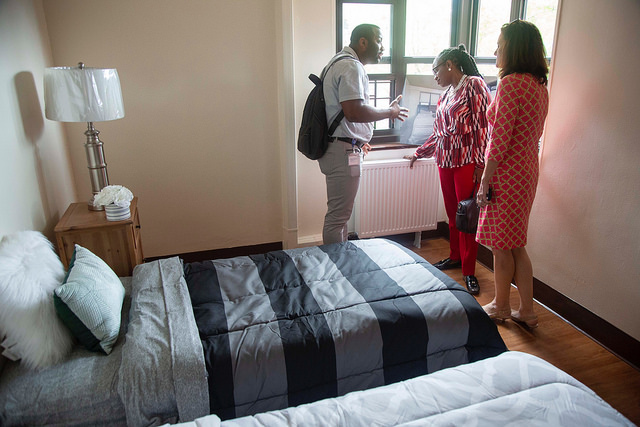
(photo: John McCarten)
For more than 30 years, a variety of federal laws have protected the personal data of Americans online at a time of unprecedented technological development. These laws have helped foster the growth of many iconic American companies -- Amazon, Ebay, Google, Twitter, and Airbnb, just to name a few -- and create a thriving tech economy that employs hundreds of thousands of New Yorkers, and many more from coast to coast.
And yet, despite this extraordinary success, a bill pushed in the New York City Council by the hotel industry threatens to undermine these core privacy protections, setting a dangerous precedent that undermines the trust and security that formed the basis for the Internet’s explosive growth.
That bill-- Intro 981-- would blow a hole the size of a MAC truck through federal protections, forcing individuals who use platforms like Airbnb to disclose their private information to the government, all to protect the hotel industry’s record profits.
This type of bill should send chills down the spine of any New Yorker who values his or her privacy online and believes that a free and open Internet requires a commitment to protecting sensitive, personal information.
To start, if the government can force Airbnb to disclose the most precious information of their users without reproach, what’s to prevent it from forcing Google, Amazon, Ebay, a news publication, or any other website from doing the same?
That may read as deeply Orwellian cynicism, but such a slippery slope is not entirely unprecedented. In fact, the City itself has just recently felt the threat of lost privacy, on the behalf of undocumented residents who fear the consequences of their personal information falling into the hands of immigration officials. Those very concerns led the City to destroy potentially sensitive records gathered as part of its IDNYC program to ensure that they could not fall into other hands.
The impact of lost privacy is also far from hypothetical for Airbnb hosts across the five boroughs, some of whom have already had their privacy violated at the hands of special investigators working for the hotel industry and New York City’s Office of Special Enforcement.
That includes middle class home sharers like Skip in Sunset Park, who began sharing a portion of his family home when he developed medical issues that made it difficult to make ends meet. The extra income from opening his doors ensured he wouldn’t have to sell the home in which he was raised.
And yet, Skip is one of countless Airbnb hosts who has been targeted by the Office of Special Enforcement for sharing his own space, with investigators appearing at his door and asking one his guests to enter without a warrant. In Skip’s words, as a result of the investigators’ action: “I felt like I’m not safe in my own home.”
In seeking to empower the very agency -- an agency that has worked hand in glove with a hotel industry set on destroying home sharing in New York, no matter what the cost for everyday New Yorkers -- that threatened Skip’s privacy with all hosts’ personal information, the City Council is making a clear statement on how it values the online security (not to mention, the economic stability) of regular New Yorkers.
If Council members were concerned about more than protecting the record profits of an industry that donates hundreds of thousands of dollars to their campaigns, it wouldn’t be difficult to work together to find a way to share data to target truly bad actors, while cementing privacy protections that ensure the security of personal data online.
Airbnb knows this better than anyone. After all, we’ve worked with cities across the country and around the world to achieve responsible regulation that provides government with the tools to enforce the law against bad actors while safeguarding the identities of regular, responsible hosts and the economic lifeline that home sharing represents for their families.
We stand ready to do the same here in New York City.
In the meantime, the need to protect and defend our privacy is as urgent and necessary as ever. As the battleground turns to the New York City Council, each of us must raise our voices and reject industry-backed efforts to sacrifice our privacy at the altar of profit.
***
Andrew Kalloch is the Americas Policy Manager for Airbnb. On Twitter @AndrewKalloch and @Airbnb.
***
Have an op-ed idea or submission for Gotham Gazette? Email This email address is being protected from spambots. You need JavaScript enabled to view it.
A Supportive Housing Victory, and Much More To Do
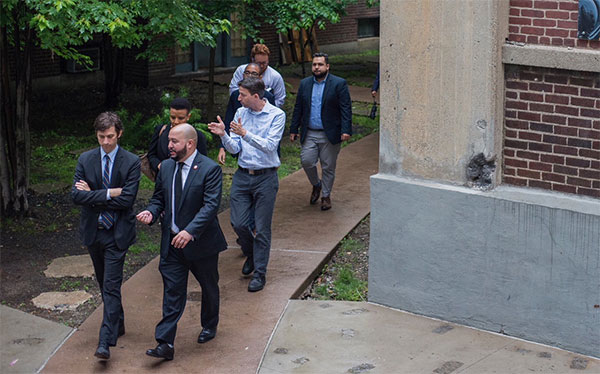
Council Members Levin & Salamanca, the authors, foreground (photo: Jeff Reed)
New York City is facing a crisis. There are more than 60,000 homeless individuals living in the city shelter system daily, and thousands more in shelters for survivors of domestic violence, youth, and those living with HIV/AIDS. An additional estimated 4,000 New Yorkers sleep on the streets each night. And according to the Coalition for the Homeless, the number of homeless New Yorkers sleeping each night in municipal shelters is 83 percent higher than it was a decade ago.
These numbers are staggering. We, as elected leaders have a responsibility to do better and fully invest in solutions that work.
That is why, as moderators at this year’s New York State Supportive Housing Conference, we are proud to champion the city’s efforts to build more supportive housing -- a critical component of the City’s efforts to combat the homelessness crisis. We’re proud that the new city budget recently agreed upon by the Mayor and City Council, which we are members of, increased from 500 to 700 the supportive housing units that will become available in the next fiscal year. There is still much more to do.
Supportive housing is permanent affordable housing paired with wrap-around services designed to help people maintain their homes for the long-term. All tenants have a lease, and are provided with individualized on-site care, including case management, job training, and mental health and substance abuse counseling. Supportive housing developments are run by non-profit organizations that typically provide both support services and management.
Last year, the City Council General Welfare Committee held a hearing in The Schermerhorn, a supportive housing building that also contains affordable housing units for community members and artists, along with a theater for the public. It is a good example of how these developments create jobs and contribute to the growth and well-being of a neighborhood.
Supportive housing’s track record has shown its effectiveness in ending homelessness, and improving neighborhoods, creating much-needed affordable housing and saving taxpayer dollars. Simply put, it is housing for those most in need. Residents have a place to call home in an environment that provides direct case management and access to mental health providers. We know all too well how vital mental health care is to a person’s wellbeing, and is that much more critical for individuals who are unstably housed and have often faced significant trauma. The integrated service model enables people to connect to the programs that are right for them, helping them to lead their best lives.
Organizations like the Supportive Housing Network of New York, comprised of more than 200 nonprofit organizations, link the 50,000 units of supportive housing they’ve created with critical services and programs that give New Yorkers a jumpstart on advancing the lives they want to lead through a more holistic approach.
Supportive housing has made a world of difference to New Yorkers:
Like Robert, who struggled with mental illness and addiction most of his life, living in Madison Square Park for ten years. After a health emergency, Urban Pathways’ outreach team helped him move into a beautiful new apartment in his native Bronx. He’s an active participant in his building and in client advocacy groups, regularly visits with his mother and grandchildren, and is beloved by residents and staff alike.
And like Shannon, who has dealt with undiagnosed bipolar disorder and PTSD from a lifetime of sexual assault and domestic abuse. When she became a tenant at Community Access’ Gouverneur Court, things started to change: she fell in love with her current life partner, fellow resident Kenny, and overcame addiction with the support of the staff at Community Access. She now has full time work at the Social Security Administration and recently graduated with a master’s degree.
These stories show firsthand that supportive housing works. It’s why the Mayor proposed a plan in 2015 to build an additional 15,000 supportive housing apartments over 15 years through the city’s new NYC 15/15 program. We applaud the administration for this plan, yet we also know the need is immediate. We need to do more to bring units online today.
As Chairs of the City Council’s Land Use and General Welfare Committees, we’re working collaboratively with our fellow Council Members to help speed the creation of the Mayor’s promised 15,000 supportive apartments over the next several years so that all New Yorkers will have a place to call home.
We need a bold vision to end homelessness. Supportive housing is the key.
***
Stephen Levin represents the 33rd City Council District, including parts of Brooklyn, and Rafael Salamanca, Jr. represents the 17th District, including parts of the South Bronx. On Twitter @StephenLevin33 and @Salamancajr80.
***
Have an op-ed idea or submission for Gotham Gazette? Email This email address is being protected from spambots. You need JavaScript enabled to view it.
For-Hire Companies Must Make Rides Accessible to All
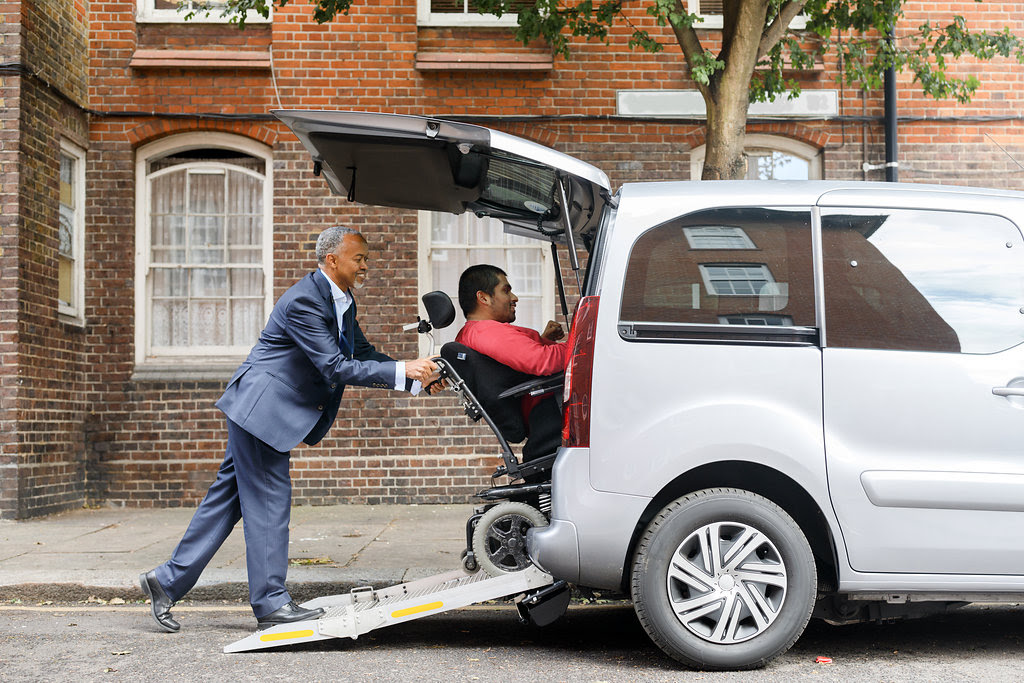
(photo via Uber)
They may claim to be “doing the right thing” in their splashy campaigns, but for-hire-vehicle companies like Uber and Lyft are in New York courts right now fighting fairness -- when it comes to serving the city’s 99,000 wheelchair users.
Whether you need to get to a job interview, a doctor’s appointment, or a dinner with friends, finding reliable and affordable transportation is a daily struggle if you use a wheelchair in New York City. The subway system -- with its tiny number of functioning elevators -- remains almost wholly inaccessible. Buses creep along, and the MTA’s paratransit system, Access-A-Ride, runs notoriously late and slow. The taxi industry offers a limited number of wheelchair-accessible vans with ramps (after years of litigation), and the number does not match the need. And in any case, cabs remain heavily concentrated in Manhattan and are extremely difficult to find in the outer-borough neighborhoods where many people with disabilities live.
One might think that the giant for-hire-vehicle (FHV) industry would look to fill this urgent transportation need, but only two of the major companies -- Uber and Lyft -- even claim to offer wheelchair-accessible vehicle (WAV) service, while Via, Juno, and Gett offer none at all.
But, 70 percent of the time the WAV services offered by Uber and Lyft failed even to locate a WAV during our testing last month for New York Lawyers for the Public Interest’s report “Left Behind,” in which we requested identical WAV and “regular,” non-WAV rides for the same time periods, at common locations such as JFK and LaGuardia airports, major medical centers, and Grand Central Station. To make matters worse, in the few instances when the smartphone platform apps did locate a WAV, the estimated wait time averaged four times as long as the wait time for inaccessible vehicles.
In response to this blatant equal rights violation perpetrated throughout the city’s massive fleet of 100,000 for-hire vehicles, the city’s Taxi and Limousine Commission (TLC) prepared a new rule requiring FHV operators, including “e-hail” operators such as Uber and Lyft, to incorporate a minimum number of WAVs into their fleets, starting with a minimal five percent this year, and increasing to a not-that-much-larger 25% percent by 2023.
But instead of taking this opportunity to serve the public fairly, as required by law, Uber, Lyft, and Via are fighting the new provision in court, claiming that it will inflict “economic damage” on the massive industry. Even worse, the large for-hire-vehicle companies are doubling down on their discriminatory practices – they are now pushing a bill in the state Legislature that would entirely override the TLC’s authority to mandate more accessible vehicles and effectively create a separate and unequal FHV service for people with disabilities.
Accompanying the mega-companies’ profit-driven objection is the unsubstantiated argument that individual drivers will not want to operate ramp-equipped wheelchair accessible vehicles, because they are more expensive to purchase and slower to operate. These arguments ring hollow. Uber, Lyft, and other FHV dispatch corporations are expert at offering an extensive menu of bonuses and incentives to drivers to ensure that there are ample drivers and vehicles available when and where the company wants them.
For example, Uber’s website touts perks like $800 in guaranteed income for new drivers, immediate same-day sessions for new drivers to help “fast track” the TLC licensing process, and a range of vehicle rental, lease, and financing options for drivers who don’t own vehicles. Plenty of FHV drivers choose to drive large, inefficient SUVs and luxury vehicles (to the detriment of our local air quality and traffic congestion) because the company offers them incentives to do so -- and plenty would opt to drive accessible vehicles equipped with wheelchair ramps, if offered the right incentives.
If these FHV e-hail corporations want to continue operating in our city (and clogging our streets with thousands of inaccessible vehicles), they should be required to harness their enormous resources to provide equal access to the thousands of New Yorkers with disabilities who most need their services.
***
Justin Wood is Director of Organizing and Strategic Research at New York Lawyers for the Public Interest (@NYLPI) and author of the “Left Behind” report.
***
Have an op-ed idea or submission for Gotham Gazette? Email This email address is being protected from spambots. You need JavaScript enabled to view it.
To Help New Yorkers Quit Opioids, Expand Access to Medical Marijuana Now
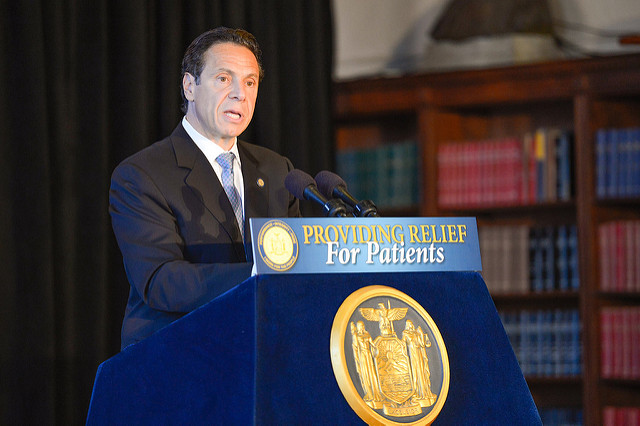
Gov. Cuomo at a med mar announcement (photo via the Governor's Office)
As a 67-year-old cancer survivor who suffers from chronic pain as a result of cancer treatments, medical marijuana has allowed me to resume a more normal life free of addictive opioid medications. I hope that lawmakers will now consider expanding the state’s medical marijuana program so that more New Yorkers will have the same access to these important treatments as an alternative to the powerful prescription painkillers that sparked the opioid crisis in our state.
My experience is all too typical of how so many people can easily find themselves reliant on prescription painkillers. Following my retirement from the U.S. Navy and a career in retail management, I was diagnosed with colorectal cancer in December 2015 and underwent chemotherapy, radiation therapy, and abdominal perineal resection surgery the following year. As a result of these treatments, I developed debilitating peripheral neuropathy and chronic lower spine pain and was unable to function normally.
The pain was constant and excruciating. My doctors prescribed oxycodone to manage my pain, and with no other options seemingly available, I was eventually taking Percocet pills every four hours or less.
But after researching New York State’s medical marijuana program, I finally had hope that an alternative to opiates was available to help treat my pain. I contacted my doctor and obtained my medical marijuana card in December 2017. Working closely with my doctor and the pharmacist at the dispensary in my community, we found the medical marijuana products that work best for me.
In just a few months, I was able to quit my oxycodone prescription and now live a more normal life — once again able to enjoy my retirement, children, and grandchildren. While my pain will never completely vanish, medical marijuana helps me manage the symptoms without fear of an opioid addiction that has claimed thousands of lives in New York in recent years. It has also been critical in helping to manage my Post Traumatic Stress Disorder (PTSD), which I developed following service in the Vietnam War.
But while I had a condition that made me eligible for the state’s medical marijuana program — and am fortunate to have a dispensary in my community that could help me quit oxycodone — thousands of New Yorkers still lack adequate access to medical marijuana and remain at the mercy of opioid-based prescriptions to manage their conditions.
Fortunately, there is hope for these patients in need of care. Recently proposed bills in the state Senate and Assembly would greatly expand access to medical marijuana for New Yorkers.
Senator George Amedore and Assembly Member Richard Gottfried have each introduced bills in their respective chambers that would allow doctors to prescribe medical marijuana to treat opioid addiction or as an alternative for those currently using prescription opiates — which could help prevent an addiction before it starts.
Separately, Assembly Member Gottfried and Senator Diane Savino have both proposed bills that would increase the number of potential dispensaries in New York from 40 to 250 by allowing medical marijuana companies to open up to 25 dispensaries each, bringing access to care for the many communities still in need throughout the state.
While these bills would undoubtedly help thousands of New Yorkers, they remain stuck in their respective committees with just days remaining in the current legislative session. Without action by lawmakers now, patients in need of medical marijuana care will be forced to wait even longer.
My experience is proof that medical marijuana is an important and meaningful alternative to prescription drugs for those suffering from chronic and painful conditions. I hope state lawmakers will support patients like myself by taking immediate action to pass these bills and give more New Yorkers hope for a life free of powerful and addictive opioid-based drugs.
***
Garry Croney is a resident of Newburgh.
***
Have an op-ed idea or submission for Gotham Gazette? Email This email address is being protected from spambots. You need JavaScript enabled to view it.
Why Cynthia Nixon Will Lose
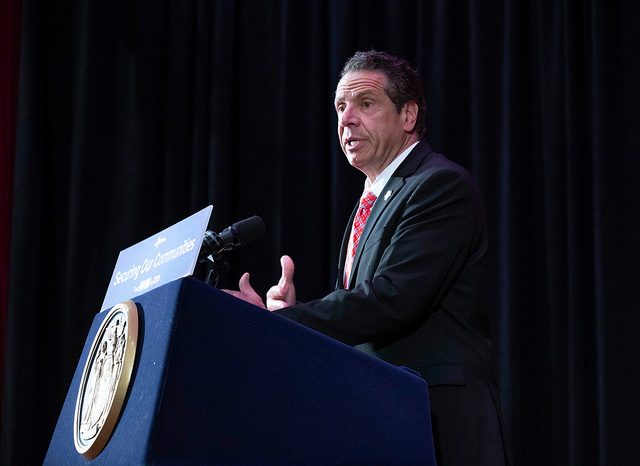
Gov. Cuomo (photo: Mike Groll/Governor's Office)
One thing is evident when considering the electoral dynamics in New York, and when taking into account recent polling on the gubernatorial race: the path to victory leads through black and Latino communities and Governor Andrew Cuomo has a major leg up.
The most recent Siena College poll indicates that among Latinos and African-Americans Cuomo is winning by significant margins. Among African-Americans polled, the governor receives a whopping 74% of the vote and among Latinos he’s at a significant 69% (support among both groups has increased since Siena’s last poll). Together, black and Latino New Yorkers account for 42% of the entire Democratic primary electorate, according to my calculations. Given these numbers, it is no wonder that Cynthia Nixon is attempting to make inroads into these communities, though seemingly less so in Latino communities than black communities.
Unfortunately for Nixon, the numbers are just not there. While Siena’s polling shows the governor above the 70% mark among communities of color, the reality is that the governor’s support is likely to be higher than that.
Here’s why: Siena’s own numbers indicate that 9% of the statewide overall electorate is African-American and 8% is Latino -- the poll is of likely general election voters, with Democrats asked to weigh in on the primary. But that is a significant undercount of the actual reality in a Democratic primary. According to data provided by L2, a national voter data company, 18% of the New York Democratic primary electorate is Latino and 22% black. So, the 74% support among African-Americans in Siena’s polling, and 69% support among Latinos for Cuomo, will be a bigger deal than anticipated when factoring in actual turnout in the primary.
Beyond the numbers, the governor can lay claim to a host of accomplishments that he can say have positively impacted communities of color. From paid family leave to an increase in the minimum wage; a tuition-free college program to the allocation of $10 million to a defense fund for immigrants facing the Trump administration’s backlash, Cuomo has made a mark for himself particularly among people of color. And the governor a couple of months ago issued an executive order that will help grant the right to vote to most parolees, another constituency dominated by African-Americans and Latinos. Black and Latino communities will ultimately judge whether the governor’s actions have truly benefited them.
When considering these accomplishments, it is no wonder why Governor Cuomo’s favorability remains high among Latino and black New Yorkers. With more than 40% of the primary vote coming from these two key voting blocs, and considering his high favorability ratings among them, Cuomo should move to the general election fairly easily.
***
Eli Valentin is a Democratic consultant and pastor of the Iglesia Evangelica Bautista in New York City. On Twitter @EliValentinNY.
***
Have an op-ed idea or submission for Gotham Gazette? Email This email address is being protected from spambots. You need JavaScript enabled to view it.
Help People with Mental Illness: Make Kendra’s Law Permanent
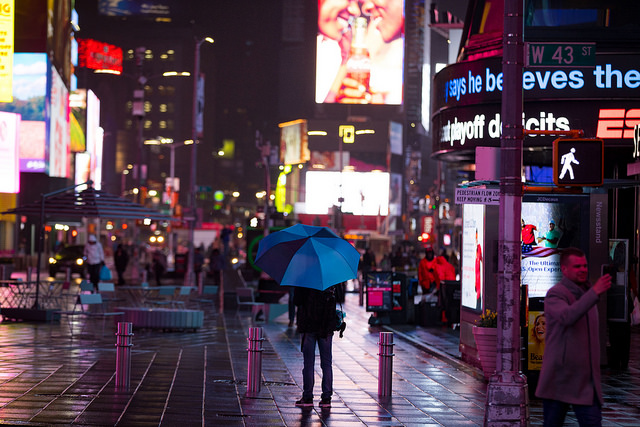
(photo: Benjamin Kanter/Mayoral Photo Office)
As the state legislative session comes to a close, Governor Andrew Cuomo, Assembly Speaker Carl Heastie, and Assembly Mental Health Committee chair Aileen Gunther have still not made New York’s most effective mental illness law permanent or closed loopholes in it. Their inaction is cruel to people suffering from mental illness and unsafe for the public.
Kendra’s Law allows judges to order a subset of those with the most serious mental illness -- those who have a proven history of arrest, incarceration, hospitalization or violence that was caused by stopping their treatments -- to accept one year of outpatient treatment. Being court ordered to accept treatment, which often includes medications, lowers homelessness, hospitalization, arrest, and incarceration among people with serious mental illness by 70%.
Patients in the court-ordered treatment programs continue to live with their families and friends in their communities, making it less restrictive than the alternatives, inpatient commitment or incarceration. By reducing the use of hospitals and jails it saves taxpayers 50% of the cost of care. Many more people with serious mental illness and a history of hospitalization, arrest, incarceration, or violence should be court-ordered to participate in Kendra’s Law programs.
Kendra’s Law requires the community mental health programs to serve those with serious illnesses who are under court orders, rather than always picking and choosing who they serve. As I documented in Insane Consequences: How the Mental Health Industry Fails the Mentally Ill, trade associations like the New York Association of Psychiatric Rehabilitation Services (NYAPRS) and Mental Health America (MHA) object to it. Some of their members want to continue to receive state funds without any obligation to serve those with the most serious illnesses.
Cuomo, Heastie, and Gunther, have decided to side with these trade associations by refusing to make Kendra’s Law permanent or closing the loopholes in it. That puts patients, the public, and first responders, including police officers, at risk of random acts of violence by those with serious mental illness who go untreated and inhibits efforts to reduce homelessness and needless hospitalizations.
Because as written Kendra’s Law expires every five years, and risks not being renewed, community programs that do support helping those with the most serious mental illness are reluctant to commit to hiring the staff needed to get court orders and provide ongoing monitoring of patients. The monitoring ensures those with serious mental illness under Kendra’s Law are complying with treatment, including their medications.
Heastie and Gunther should ensure the Assembly passes the Kendra’s Law improvement bill proposed by Senator Catharine Young that passed the state Senate, and Governor Cuomo should sign it into law. Kendra’s Law is supported by groups as diverse as the NYS chapter of the National Alliance on Mental Illness and the New York State Association of Chiefs of Police. The bill is even more important during a time that the state is continuing its relentless push to close state psychiatric hospitals, the last refuge for many of those with the most serious mental illness.
In Governor Cuomo’s State of the State speech, he talked compassionately about those with mental illness who are homeless. “Leaving a sick person to fend for themselves is not progressive, charitable, ethical or legal...It is our obligation as a caring people, a compassionate society, to reach out and provide whatever social services or address whatever needs the individuals presents." He went on to ask localities to “tell us what law stops them from helping mentally ill street homeless and we will change the law this session."
Kendra’s Law is that law that needs changing. It needs loopholes closed and permanence. Cuomo, Heastie, and Gunther should do that now, before the next tragedy.
***
DJ Jaffe is author of Insane Consequences: How the Mental Health Industry Fails the Mentally Ill and Executive Director of Mental Illness Policy Org, a non-partisan think-tank on mental illness policy.
***
Have an op-ed idea or submission for Gotham Gazette? Email This email address is being protected from spambots. You need JavaScript enabled to view it.